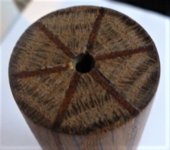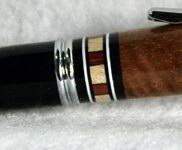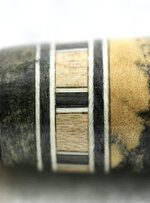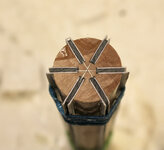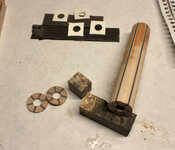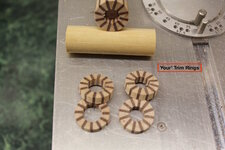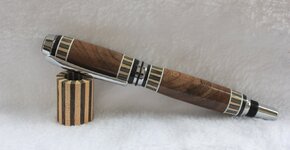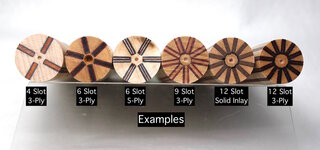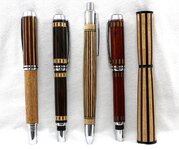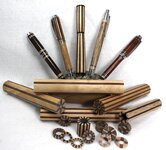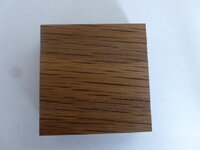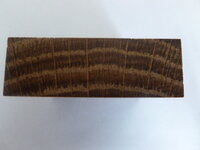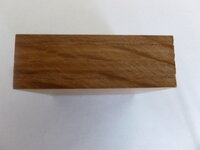NGLJ
Member
I wanted to create a blank where the face grain would be seen all the way around. So, I made a stave blank with 6 staves and mahogany veneer between the staves. It is about 1" in diameter and 5.5 inches long. I haven't yet decided exactly what to do with it. The first part of the exercise was to figure out how to do it reliably and accurately. Needless to say some early efforts finished on "the cutting room floor"!


